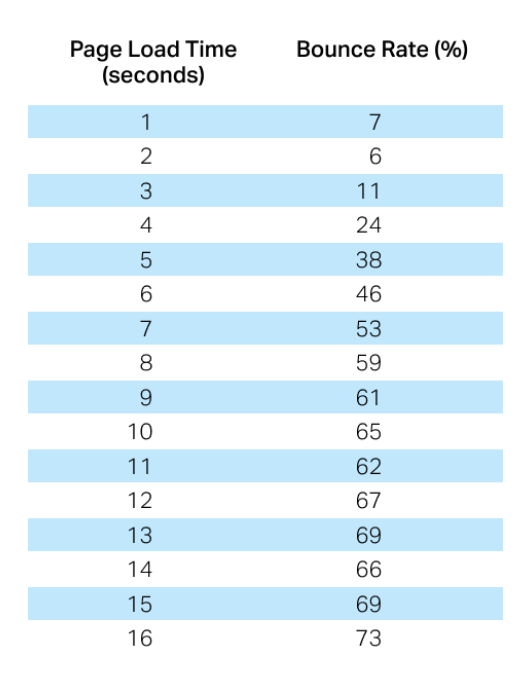In the current digitally driven world, users demand quick access to information and smooth interactions with digital platforms. Therefore, performance testing is crucial. Every digital product, including e-commerce websites, mobile applications, and enterprise software, must deliver optimal performance to meet user expectations and remain competitive. Imagine visiting a website and facing slow loading times, unresponsive pages, or frequent crashes. Such an experience can be frustrating, leading to user dissatisfaction and negatively impacting brand reputation, customer retention, and revenue generation. According to Google’s John Mueller, webpage load time under the benchmark of 2 seconds is the limit that most of your visitors are willing to wait for your page to load.
In today’s digital landscape, where attention spans are short and alternatives are abundant, organizations must prioritize delivering seamless user experiences. In this blog post, we’ll explore the significance of performance testing, the common challenges organizations face, and its significant benefits.
Challenges in Pursuit of Web Performance
Many organizations recognize the importance of web performance but struggle to achieve and maintain optimal levels. This is due to several common hurdles, including:
- Complex application environments: Modern web applications have multiple layers of code, third-party integrations, and dynamic content, making it challenging to manage performance in such complex environments.
- Rapid development cycles: The pressure to quickly release new features and updates often leads to insufficient testing, resulting in performance issues slipping through the cracks.
- Diverse user contexts: Users access websites and applications from various devices, browsers, and network conditions. Ensuring consistent performance across these diverse contexts can be daunting.
- Lack of visibility: Many organizations require more comprehensive visibility into their application’s performance, which makes it challenging to effectively identify and address performance bottlenecks.
What is Performance Testing?
Performance testing is an essential part of the software testing process that measures how a system performs under different conditions, such as heavy user loads, high traffic volumes, and adverse network conditions. It involves simulating real-world scenarios to analyze critical performance metrics, such as response time, throughput, resource utilization, and scalability.
Types of Performance Testing
Several types of performance testing evaluate different aspects of system performance, including:
- Load Testing: Load testing assesses the system’s performance under expected load conditions by subjecting it to increasing levels of concurrent user activity to determine its capacity limits and identify potential performance bottlenecks.
- Stress Testing: Stress testing evaluates the system’s robustness and stability under extreme load conditions beyond its average operating capacity. The goal is to identify how the system behaves under peak load and determine its breaking point.
- Soak Testing: Soak testing, also known as endurance testing, assesses the system’s performance over an extended period under sustained load conditions to identify memory leaks, resource exhaustion, and performance degradation over time.
- Spike Testing: Spike testing evaluates the system’s ability to handle sudden increases or spikes in user activity by rapidly increasing the system load to simulate a sudden surge in traffic and assess its response time and stability.
- Scalability Testing: Scalability testing measures the system’s ability to scale up or down in response to load or user demand changes by determining how well the system can handle the increased workload by adding resources such as servers or network bandwidth.
- Volume Testing: Volume testing evaluates the system’s performance with large volumes of data by assessing how the system handles data processing, storage, and retrieval under varying data volumes to ensure scalability and efficiency.
- Compatibility Testing: Compatibility testing evaluates the system’s performance across different hardware, operating systems, browsers, and network configurations to ensure that it functions correctly and performs optimally in diverse environments.
Why Performance Testing Matters More Than Ever?
In today’s digital age, performance testing has become an essential tool for businesses that aim to meet evolving user demands and drive success. According to Google, websites that meet Core Web Vitals thresholds experience a significant reduction in abandonment rates, highlighting the direct correlation between performance and user engagement. Moreover, a one-second delay in website loading time can result in a substantial 7% drop in conversion rates.

In this fast-paced digital landscape, where user expectations continue to soar, performance testing plays a crucial role in ensuring that digital experiences meet and exceed user expectations, driving business success and competitive differentiation. There are several compelling reasons why performance testing has become more critical than ever:
- Evolving User Expectations: Users expect fast and responsive digital experiences, making performance testing essential to meet these demands.
- Increasing Complexity: As web applications and technologies grow in complexity, ensuring optimal performance across various platforms and devices becomes challenging but essential.
- Competitive Landscape: In a competitive market, organizations must differentiate themselves by delivering superior user experiences, driving the need for effective performance testing.
- Impact on Revenue: Poor performance can lead to higher bounce rates, decreased conversions, and loss of revenue, emphasizing the importance of performance testing in maximizing business outcomes.
- Reputation and Brand Image: Slow-loading or unreliable websites can damage brand reputation and customer trust, highlighting the significance of performance testing in maintaining a positive brand image.
In today’s digital economy, performance testing is not just a technical necessity, but also a strategic imperative for organizations. As user expectations continue to evolve and the digital landscape becomes more competitive, the significance of performance testing cannot be overstated. By prioritizing performance testing and investing in robust testing methodologies and tools, organizations can deliver exceptional user experiences, drive revenue growth, and gain a competitive edge in the market. With the right approach to performance testing, businesses can overcome challenges, optimize their digital products, and position themselves for long-term success in the digital age. In conclusion, performance testing is a crucial aspect of digital product development that should not be overlooked.



